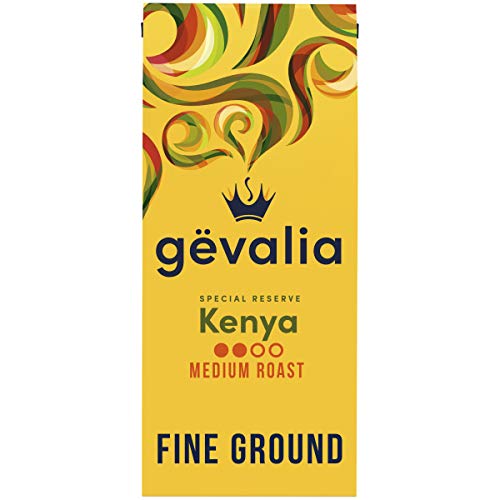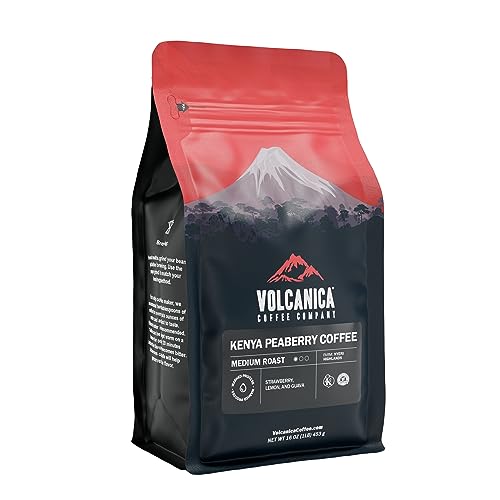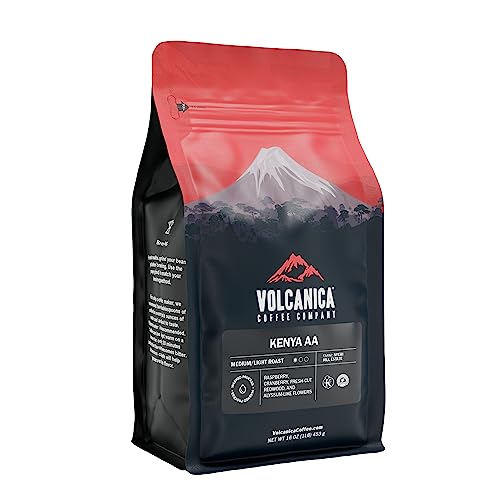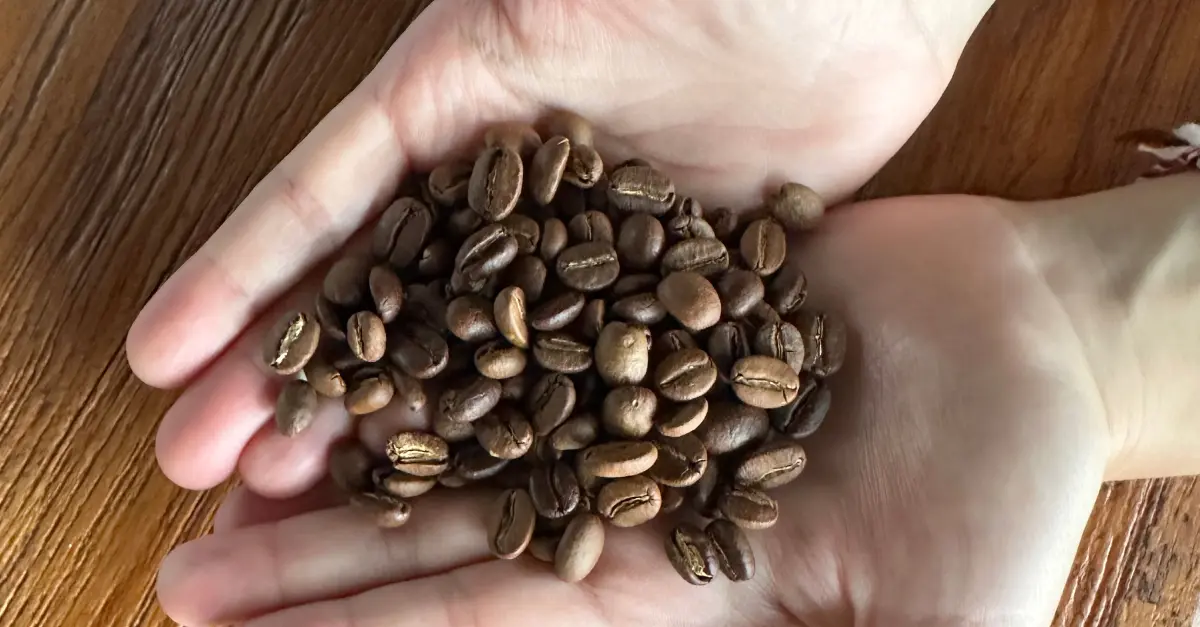Kenya Coffee: Discover Kenya’s Premium Coffee
Kenya has gained worldwide recognition for being a premier producer of some of the finest and most sought-after coffee in the world. Renowned for its intense flavor, pleasant aroma, and delightful cocoa notes, a Kenyan coffee cup promises a truly wholesome experience. Kenyans love their coffee, and it is common to find men sitting outside on benches in a hot, humid afternoon sipping kahawa Tungu (Kahawa Chungu), loosely translated as “bitter coffee,” a claimed aphrodisiac.
In Nairobi City, you will find the city full of specialty coffee shops on most streets. You will also come across small coffee vendors who carry their home-brewed coffee in large vacuum flasks and Maandazi to sell during chilly days and evenings in Nairobi.
Brief History of the Arrival of Coffee in Kenya
In a fascinating twist of history, the journey of coffee to Kenya took an unexpected detour, spanning 500 years before finally finding its way to the lush lands of the Kiambu-Kikuyu district. It all began with the French Mission at Bura on the Taita Hills, where the first coffee plants are believed to have been planted as far back as 1885. These pioneering missionaries had transported precious bourbon coffee seeds from the distant shores of La Réunion island to the promising soils of Kenya in the late 1800s.
However, the tale of coffee’s arrival in Kenya took a surprising turn with the involvement of an intriguing Scottish figure named John Paterson. He introduced the coffee plant to Kenya officially in 1893, marking the formal commencement of coffee cultivation in the region. The fertile lands of the Kiambu-Kikuyu district proved to be a perfect home for coffee cultivation, and by 1896, the area had already boasted extensive coffee plantations that stretched across several hundred acres. These plantations predominantly grew the Bourbon and Kent varieties of coffee, which thrived under the Kenyan sun. The colonial era witnessed further expansion of coffee cultivation, with irrigation practices introduced at Kibwezi in 1900 and Kikuyu near Nairobi in 1904, adding to the country’s coffee-growing prowess.

The Unique Qualities of Kenyan Coffee
In the world of coffee connoisseurs, Kenyan beans have earned an esteemed position, consistently ranking among the top five globally. Kenyan coffee has several unique qualities that set it apart from other coffees worldwide. Let’s explore some of the unique qualities of Kenyan coffee:
- Vibrant flavor: Kenyan coffee is known for its intense, distinct vibrant, crisp flavor, often described as bright and complex. It exhibits a mix of fruity, wine-like acidity with pleasant notes of berries.
- Pleasant Aroma: The aroma of Kenyan coffee is captivating, offering a delightful and inviting scent that adds to the overall coffee-drinking experience.
- High-Grade Quality: The beans are carefully selected and meticulously processed, ensuring a high-grade quality that meets the stringent standards set by the Kenyan coffee industry.
- Unique Growing Conditions: Kenyan farmers are blessed with ideal growing conditions, nurturing the coffee plants to perfection in high-altitude regions with fertile and favorable climates. Kenya’s coffee-growing regions are situated at high altitudes, ranging from 1,400 to 2,000 meters above sea level.
- Careful Bean Sorting: The coffee beans are meticulously sorted to ensure only the best coffee beans make it to the final product, resulting in consistency and excellence in each cup.
Featured Products
Gevalia Special Reserve Kenya Mild Roast Coffee
⭐ 4.5/5 • 💰 ~$9
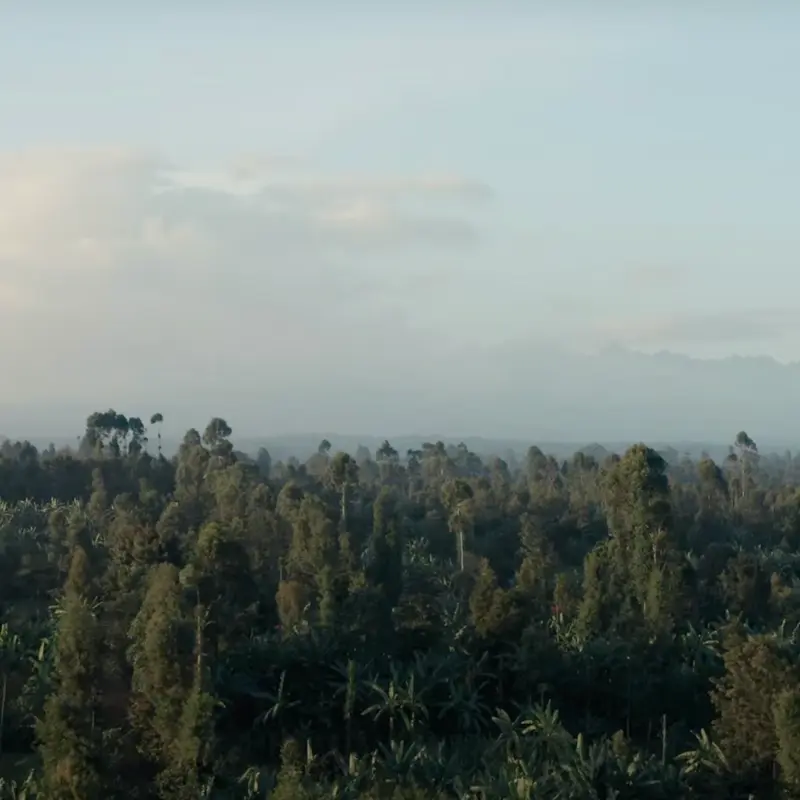
Gevalia’s Special Reserve Kenya Mild Roast Coffee in a 10oz bag provides a smooth, exotic coffee experience.
Pros:
- Provides a smooth coffee experience
- Exotic taste from Kenya
- Comes in a convenient 10oz bag
- The fine ground nature improves the quality
Allegro Coffee Kenya Grand Cru
⭐ 4.3/5 • 💰 ~$14
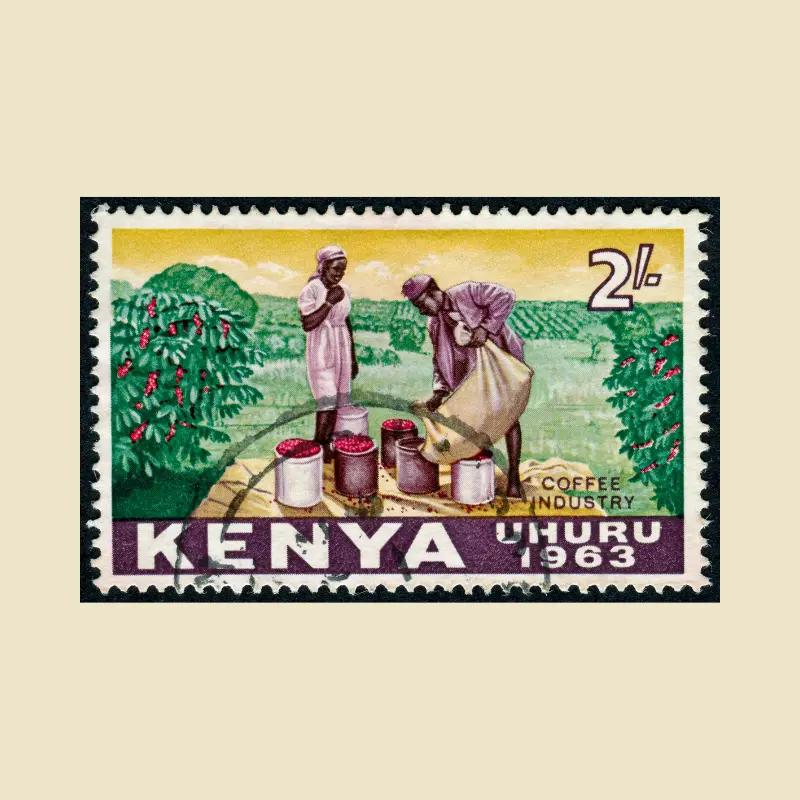
Allegro Coffee’s Kenya Grand Cru is a rich, tasty, and refreshing coffee packed as whole beans in a 12 oz pack.
Pros:
- Delicious and robust flavor
- Packed as whole beans to preserve freshness
- Ideal for any time of the day
Kenya Peaberry Coffee Single Origin
⭐ 4.2/5 • 💰 ~$28
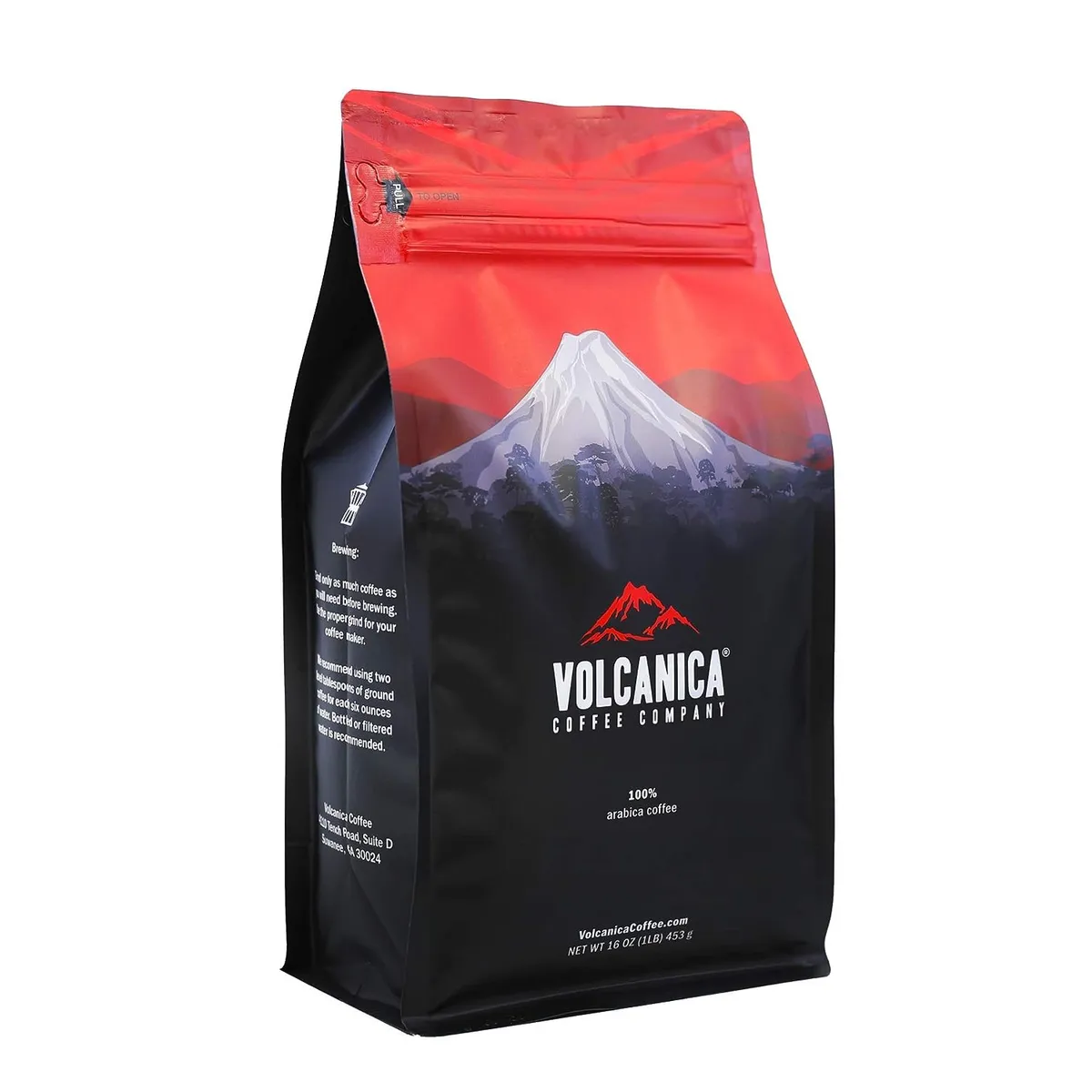
Kenya Single Origin Peaberry Coffee, fresh whole bean, provides a rich, aromatic coffee experience.
Pros:
- Offers a unique coffee experience.
- Whole beans enhance freshness.
- Rich flavor and enticing aroma.
- Entirely sourced from Kenya.
- Packaged in 16-ounce for multiple uses.
Kenya AA Whole Bean Coffee
⭐ 4.2/5 • 💰 ~$20

100% pure, freshly roasted Kenya AA coffee, whose whole beans offer a consistently delicious cup.
Pros:
- Rich, satisfying flavor
- Freshly roasted for quality
- Ideal for daily brewing
- Packaged in a handy 16-ounce bag
The Kenya Coffee Varieties
During the British colonial era in Kenya, a significant development took place with the establishment of the Scott Agricultural Laboratories, which operated from 1922 to 1944. This institution played a crucial role in imparting valuable knowledge and technical expertise to Kenyan farmers, providing them with essential training and guidance on coffee cultivation and farming practices. These efforts left an indelible mark on Kenya’s coffee industry, notably by developing two exceptional coffee varieties, SL 28 and SL 34, and the Kent 7 cultivar (K7). Kenya also grows Ruiru 11 and Batian coffee.
Here’s how the tree varieties fare in Kenyan soil:
- SL 28: It is a tall tree with high yields and does well at high to medium altitudes.
- K7 cultivar: grows well at lower elevation areas where the leaves are vulnerable to rust.
- SL 34: It is a tall tree with high yields that do well at higher elevations with good rainfall.
- Ruiru 11: It is a dwarf tree with high yields and is resistant to severe outbreaks of Coffee Berry Diseases and Leaf Rust.
- Batian: It is a tall coffee tree resistant to Leaf Rust and Coffee Berry Diseases. It yields a good cup profile which is better than Ruiru 11.
- Blue Mountain: Grows well at medium to high altitudes and is disease-resistant. However, this variety is not mostly grown in Kenya like the others.
Arabica Coffee Variety
In Kenya, Arabica coffee is a widely grown variety compared to Robusta coffee. Kenya’s unique climatic conditions, unique geography, and fertile volcanic soils in the highlands are ideal for this coffee variety. Arabica coffee, grown in Kenya, contains lower caffeine levels, making it an ideal choice for those seeking a smoother and less jittery coffee experience. This variety is celebrated worldwide for its unparalleled quality, delivering a superior cup that captures the hearts of coffee enthusiasts.

Growing Conditions in Kenya
One of the most critical factors contributing to the exceptional quality of Kenyan coffee is the high altitude at which it is grown. Coffee plantations in Kenya are typically located at elevations ranging from 1,400 to 2,000 meters (4,600 to 6,600 feet) above sea level. The higher altitudes result in cooler temperatures, slower coffee cherry maturation, and increased complexity in the beans’ flavor profile.
Specific Coffee Growing Regions in Kenya
Central Region:
Boasts of rich agricultural land and volcanic soil with farmers practicing tea, dairy, and horticultural farming. Coffee is generally grown on the slopes of Mt. Kenya and the Aberdare Ranges. Coffee-growing areas in this region comprise Murang’a, Kiambu, Thika, Kirinyaga, and Nyeri.
- Flavor profile for Murang’a, Kiambu, and Thika coffee beans: Well-rounded acidity with a grapefruit taste.
- Flavor profile for Kirinyaga and Nyeri coffee beans: Sharp citrusy acidity with blackcurrant and chocolate notes.
The Rift Valley Region:
The coffee growing areas in the Rift Valley region consist of the highlands west of Rift Valley in Nakuru, Nandi, Kipkelion, Trans Nzoia, and Baringo. Coffee thrives in this region due to the volcanic soils and mild temperatures that don’t go above 28 °C (82 °F).
- Flavor Profile for coffee grown in the Rift Valley region: Medium acidity, full body, fruity overtones, and a rich chocolate taste.
Western Region:
Coffee is grown in Bungoma County on the slopes of Mount Elgon with a flavor profile of bright acidity and fruity undertones. Vihiga County also grows coffee due to acidic soils, sunlight, the right temperature, and rainfall. At the same time, Trans-Nzoia’s coffee boasts a cup with sharp citrus acidity and a full body.
Eastern Region:
Coffee is grown in Embu, Tharaka Nithi, Makueni, and Meru Central counties. Tharaka Nithi has fertile, deep, red volcanic soil and produces great-tasting coffee.
Nyanza Region:
Coffee is grown in Kisii, Nyamira, Migori, and Kisumu Counties. Producing a cup that is smooth and creamy with medium acidity. As for the flavor, Kenya coffee grown in the Nyanza region produces sweet, toasty, nutty coffee with some fruity hints.
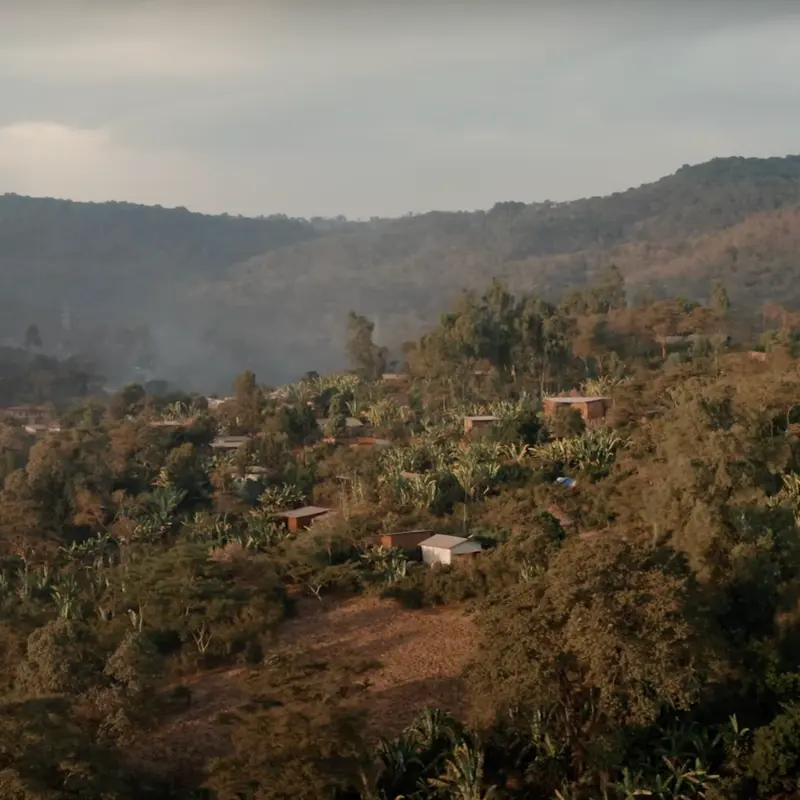
Harvesting and Processing
Coffee harvesting in Kenya is greatly influenced by the country’s unique location on the equator and its two rainfall patterns, which enable two harvests per year.
- The first flowering of coffee plants typically occurs in March and April, coinciding with the onset of the “long rains” season. This period provides the necessary moisture and favorable conditions for the coffee plants to blossom.
- The second flowering takes place between September and October, right after the commencement of the “short rains” season. This natural cycle allows the coffee plants to produce another round of blossoms, ensuring a continuous supply of coffee cherries.
- The coffee cherries gradually ripen over time, transforming in color from green to vibrant red, signaling their readiness for harvesting. This ripening process occurs in two main cycles: May to July and October to December, providing two distinct periods for coffee harvesting.
- During the harvest season in Kenya, skilled workers carefully handpick the ripe coffee cherries, ensuring they pick only the perfectly matured ones to guarantee the highest quality coffee beans for your cup of joe.
Processing
- Sorting: Harvested coffee cherries, vibrant red with ripeness, are carefully sorted, and any under-ripe or overripe cherries are separated from those at the perfect stage of ripeness.
- Pulping: The selected red cherries are promptly pulped within 24 hours of harvest to avoid fermentation. Lighter cherries are floated and pulped separately. During pulping, the outer exocarp and part of the fleshy mesocarp are removed, leaving the parchment coffee beans.
- Fermenting: Fermentation imparts the beans with their delightful sweetness. And this natural fermentation typically takes 72 hours, but enzymes, yeast, or bacteria can expedite the process to 12-24 hours, depending on the desired flavor profile.
- Washing and Sundrying: After fermentation, the parchment coffee undergoes a thorough washing and grading process followed by sun-drying in raised beds. The sun-drying process spans 8-10 days, during which the coffee beans are protected from rain and regularly turned to achieve uniform drying. The drying stages progress from “skin dry” to “Fully Dry,” reaching an ideal moisture content of 10-11%.
- Grading: The final grading of Kenyan coffee is based on the shape and size of the beans, ensuring uniformity and consistency in the final product. This categorization further adds to the value and distinction of each coffee batch.
Buying Kenyan Coffee
When looking to find and buy fresh roasted Kenyan coffee, you will notice that coffee is graded into different categories: Kenya AA, Kenya AB, Kenya C, Kenya PB, Kenya T, Kenya TT, Kenya MH/ML, and Kenya E.
- Kenya AA: Kenya AA coffee holds a distinguished position as the most popular and highly sought-after coffee bean in the world. Revered by coffee enthusiasts worldwide, it has earned a place among the world’s finest specialty coffees. The “AA” designation refers to the large size of the beans, which are meticulously sorted to meet strict grading standards, ensuring only the highest quality beans make it into this coveted category.
- Kenya AB: The difference between the AA and AB coffee bean is only the sorting mechanism whereby AA is sorted using a 6.8 mm screen while AB is sorted using a 6.2 screen. The Kenya AB coffee beans mean both A and B coffee beans are combined to form a grade AB coffee. It is rated as a premium coffee bean and is highly sought after.
- Kenya PB: This is a Peaberry coffee with only a single bean instead of two half beans inside a cherry.
- Kenya E: E stands for elephant, and literally, the Kenya E coffee beans have bigger coffee beans compared to the rest.
- Kenya C: These are the coffee beans collected after the Kenya AB are picked and are thin coffee beans.
- Kenya TT: These coffee beans are separated using air extraction to separate light-density coffee beans from the rest.
- Kenya T: These are the faulty (light, chipped, and broken) coffee beans.
- Kenya MH/ML: These coffee beans fall from the coffee plant when they ripen or aren’t picked during coffee harvesting. They are poor-quality coffee beans characterized by sour notes.
Brewing and enjoying Kenyan coffee
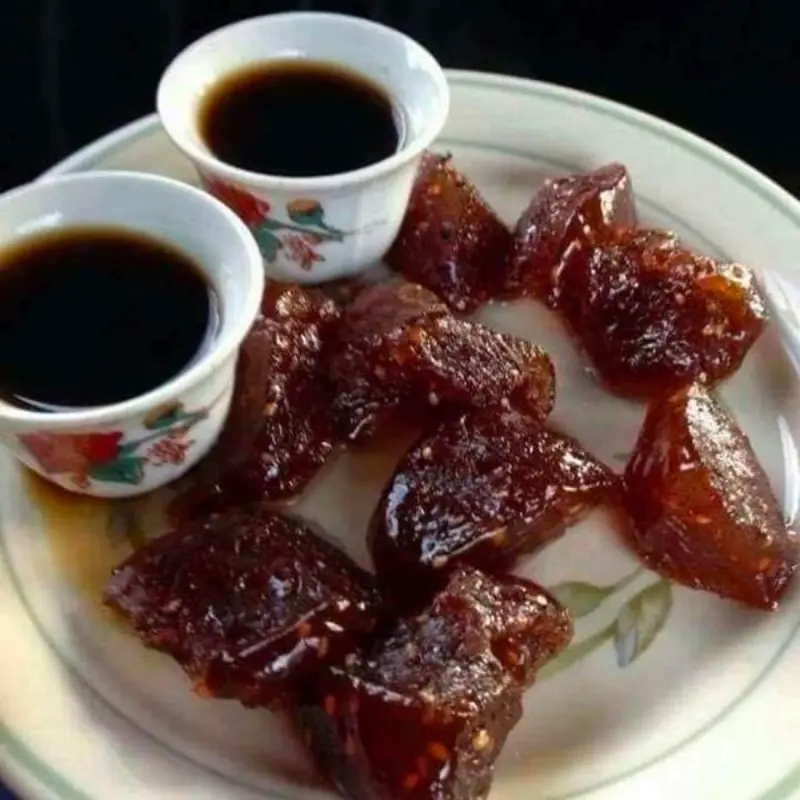
Kahawa Tungu Kenya Coffee
Here is a simple recipe you can try at home for brewing Kahawa Tungu, the coastal bitter coffee:
Kahawa Tungu Kenya Coffee Recipe
Ingredients:
- 3 tsp freshly ground coffee
- 1 cup water
- 1 cinnamon stick
- 3 or 4 cardamom capsules
- 4 cloves
- Nutmeg (optional)
Instructions:
- Add 1 cup water to a cooking pot, add cardamom capsules and cinnamon stick.
- Simmer at low heat for about ten to fifteen minutes.
- Add fresh, coarsely ground coffee at the end and simmer for an additional 3-5 min.
- Sieve/strain your Kahawa Tungu into a small ceramic cup and serve it hot.
Another way to make Kahawa Tungu is by adding all the ingredients and simmer for 15 minutes, then strain into a small ceramic cup and enjoy. You can also use Kenya coffee to make your preferred cup of joe using a French press, Cold brew, Aeropress, and any brewing method of your choice!
Conclusion
Kenya Coffee is a high-grade coffee you should not pass if you see it in a coffee shop near you. Relish in the rich flavors, embrace the unique coffee culture, and become part of the global community that cherishes and celebrates the extraordinary essence of Kenyan coffee.

